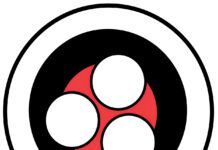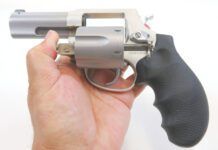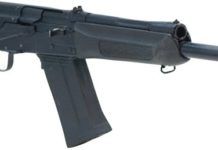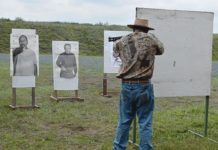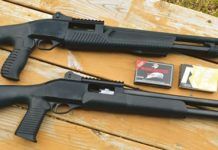Finding an affordable over/under is getting easier to do, depending on what you mean by affordable. For many, the cutoff is at $1,000; for others, it’s $1,500, and so on. For some, price is no object.
But everyone wants a gun they can shoot, and such a gun is worth its weight in gold, irrespective of what it costs. We recently had a chance to try two shotguns from U.S. Repeating Arms Co. and Franchi that held out hope of being good shooters that wouldn’t break the bank. The guns were USRAC/Winchester’s Supreme Field, which carries an MSRP of $1,383, and the $1,275 Franchi Alcione Field. Here’s what we found:
Range Testing
Because of the time of the year, we weren’t able to field-test these guns on game, so we settled for shooting them extensively on five-stand and sporting clays courses. One of the best testing methods we’ve found for checking stockfit and mounting ability is to shoot such courses without seeing the targets first, and to try to ignore the target-presentation descriptions or trap numbers on some fields. Without being able to groove your swing for the target before calling “Pull,” you find out the flaws in a gun pretty quickly.
We also patterned both guns, as reported in the accompanying table, but with the included screw-in chokes, we’re not sure how valuable that information is, since you can change the shot density with the flick of a wrench. More important were the point of aim results, which showed the Alcione shot slightly low with one barrel. Whether that was a mounting or barrel-regulation issue is hard to say, but fixing it might require the use of elliptical choke tubes in the bottom barrel.
Here’s what we thought of the guns individually:
Winchester Supreme 12 Ga. No. 513001350, $1,383
This shotgun was made in Belgium and assembled in Portugal. It had 26-inch barrels with 3-inch chrome-plated chambers, dual tapered locking lugs which independently adjust for wear, a 6mm rib with a gold front sight bead, and a safety switch-mounted barrel selector. The forearm is tapered. Under the barrels is a third, fixed lug which locks up the action to reduce recoil-induced wear on components such as the hinge system.
Back-bored barrels with the Invector-Plus system afforded choke versatility ranging from Improved Cylinder to Modified to Full. We did most of our testing with the more open chokes, and we patterned with the IC tube. The walnut stock was cut checkered at the grip and forend, and we noticed only a small chip in the forend checkering as a flaw. The barrel and receiver were deeply blued, and the receiver featured light engraving on its sides and bottom. The gun was cosmetically right for the field, with its blued metal surfaces and matte wood finish.
The gun measured 43 inches in length, had a 14.25-inch LOP, featured a drop at the comb of 1.4 inches and 2.25 inches at the heel. It weighed 7.3 pounds. The trigger broke at 4.75 pounds for the top barrel and 5.5 pounds for the bottom barrel.
A sliding safety located behind the lever reset to Safe every time we opened the action, a good idea on a field gun. With the gun on Safe, it was easy to select the top or bottom barrel. The tapered forend was less beefy than others we’ve handled recently, and we liked the trim feel. The action was new-gun stiff, but not onerous to open and close.
We shot very well very quickly with this gun, and though we can’t pinpoint a single reason why, there are plenty of aggregate reasons for this performance, in our view.
Certainly, the gun pointed well, and describing why is very difficult, since the stock dimensions dictate that each shooter sees targets differently. However, we thought the grip contour was important, because the trigger-hand thumb fit a groove in front of the comb smoothly and easily, and the bottom of the Winchester’s grip was deeper than the Alcione’s. Also, the fairly close trigger pull weights of the triggers helped, since we didn’t have to fight two different releases to get the shots off. That helped our timing. And the trigger had a smooth, rounded face, which made it comfortable to pull over hundreds of rounds.
Also, the Supreme had a very soft rubber buttpad, which can aid in recoil reduction, but which can also be tacky and catch on clothing. However, this pad, like the Alcione’s, had a hard-rubber insert at the top of the pad that smoothed the mount without compromising recoil reduction.
The grain on the butt was mostly straight, with a little figuring at the toe, and the satin finish was smooth and suitably filled. The forend had more straight-grain wood.
Frankly, we were hard-pressed to find too many flaws with the Supreme. Some shooters might benefit from cast in the stock, but that’s speculation and it would vary from individual to individual.
Franchi Alcione Field 12 Gauge No. 40405, $1,275
Franchi, based in Brescia, Italy, is part of the Benelli USA family, which itself is owned by Beretta. Under Benelli, Franchi’s product line has expanded from the original recoil-operated AL 48 to include a complete line of gas-operated semiautos and over-and-under shotguns, including the Alcione line. The top-of-the-line SX runs $1,800; two other models with titanium receivers cost $1,425. Our Field gun is available only in 12 gauge (left or right handed), but 20-gauge barrels are also available as separate items for $450. Barrel sets from 26 to 30 inches are also available for $450 to $500.
The Field model had a steel receiver and 3-inch chambers in 12 gauge. The chrome-lined barrels were proofed for steel shot and included flush-fitting choke tubes in Cylinder, Improved Cylinder, and Modified. The ventilated rib was 7mm wide. The gun shipped with a fitted plastic hard case.
The Alcione’s barrel selector was located on the trigger, allowing the user to choose which barrel fires first without changing his grip. The safety was automatic. Mechanical triggers eliminated the need for the first barrel to fire before the second can be fired. The stock and forend were walnut and checkered. Casts are available for either right- or left-handed shooters. The slip recoil pad had a smooth top insert that helped mounting. The receiver was engraved with game scenes.
The gun measured 43 inches in length, had a 14.25-inch LOP, featured a drop at the comb of 1.5 inches and 2.5 inches at the heel. It weighed 7.4 pounds. The trigger broke at 6.3 pounds for the top barrel and 6.6 pounds for the bottom barrel.
The Franchi held a cosmetic edge over the Supreme, in our view, but its nicely done satin metal and wood finishes were still appropriate for the field. The checkering was crisp and the engraving was clean. But the Alcione fell behind at the range, at least for our team, because of small differences. In the accompanying tables, you can see minor differences in drop at heel between the two guns. There was also a small difference in stock pitch, with the Winchester having just a bit more downward pitch than the Franchi. Also, the difference in trigger pull weights was significant, even though the mechanical triggers on the Franchi were more consistent.
Gun Tests Recommends
Franchi Alcione Field 12 Gauge No. 40405, $1,275. Conditional Buy. There is nothing at all wrong with this shotgun. If you shoot one and like it, we think its interesting feature set—including the trigger-mounted barrel selector, mechanical triggers, and stocks with cast—might be worth the money. Also, it ships with its own case, which would offset gunsmithing costs you’d incur as a result of lightening the trigger pulls.
Winchester Supreme 12 Gauge No. 513001350, $1,383. Buy It. This gun fit our shooters well, and we would happily add it to our collection.



